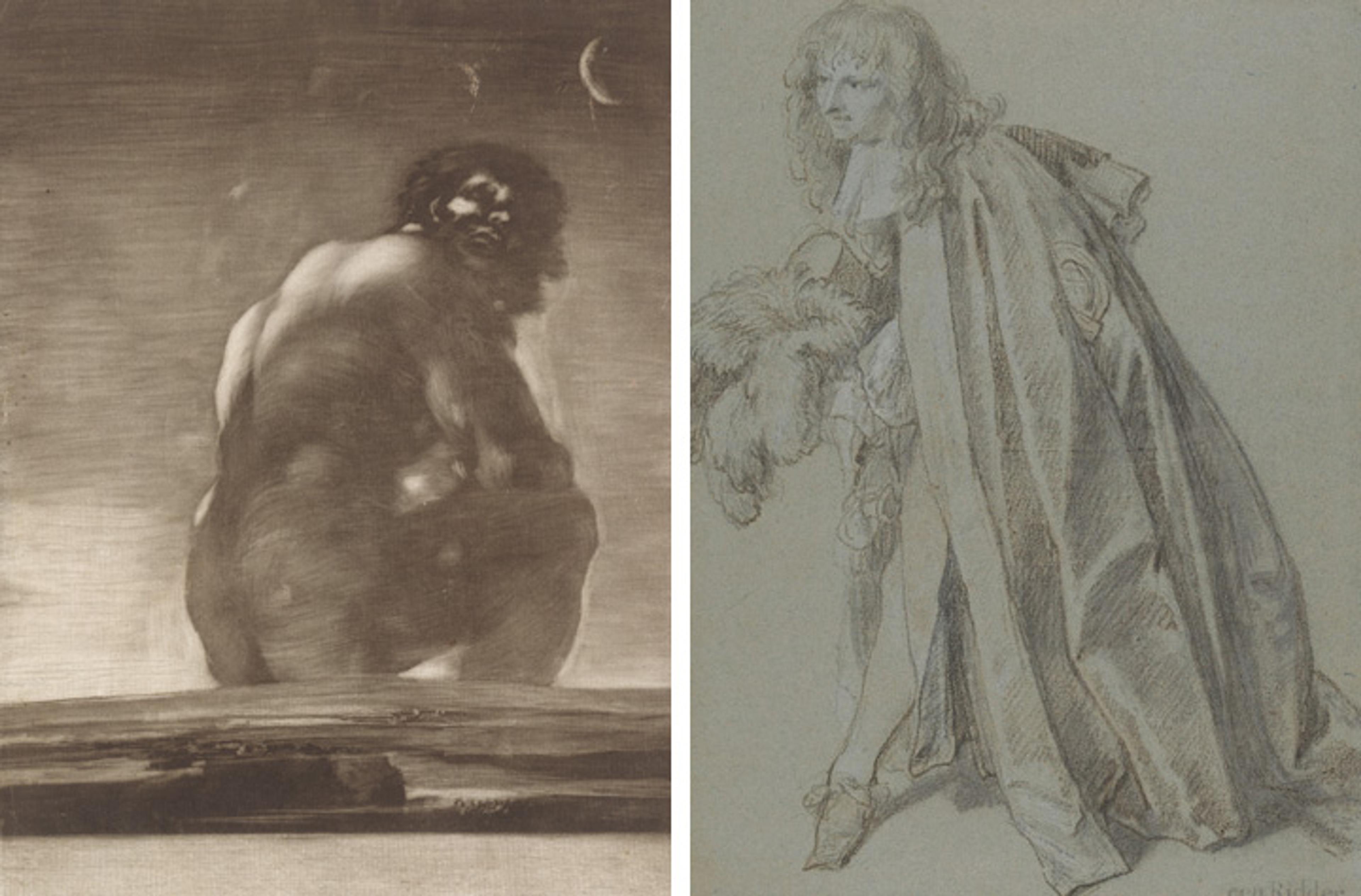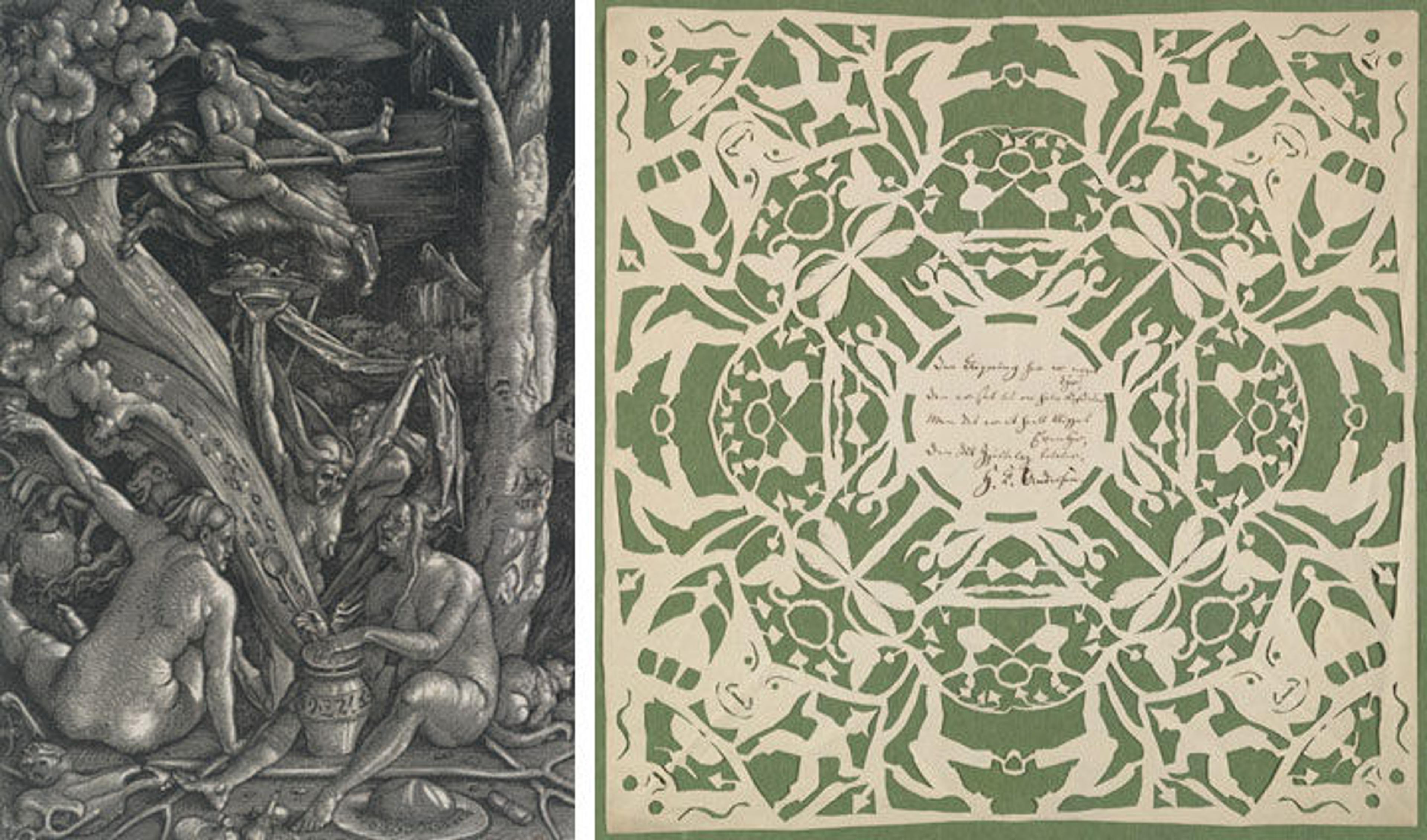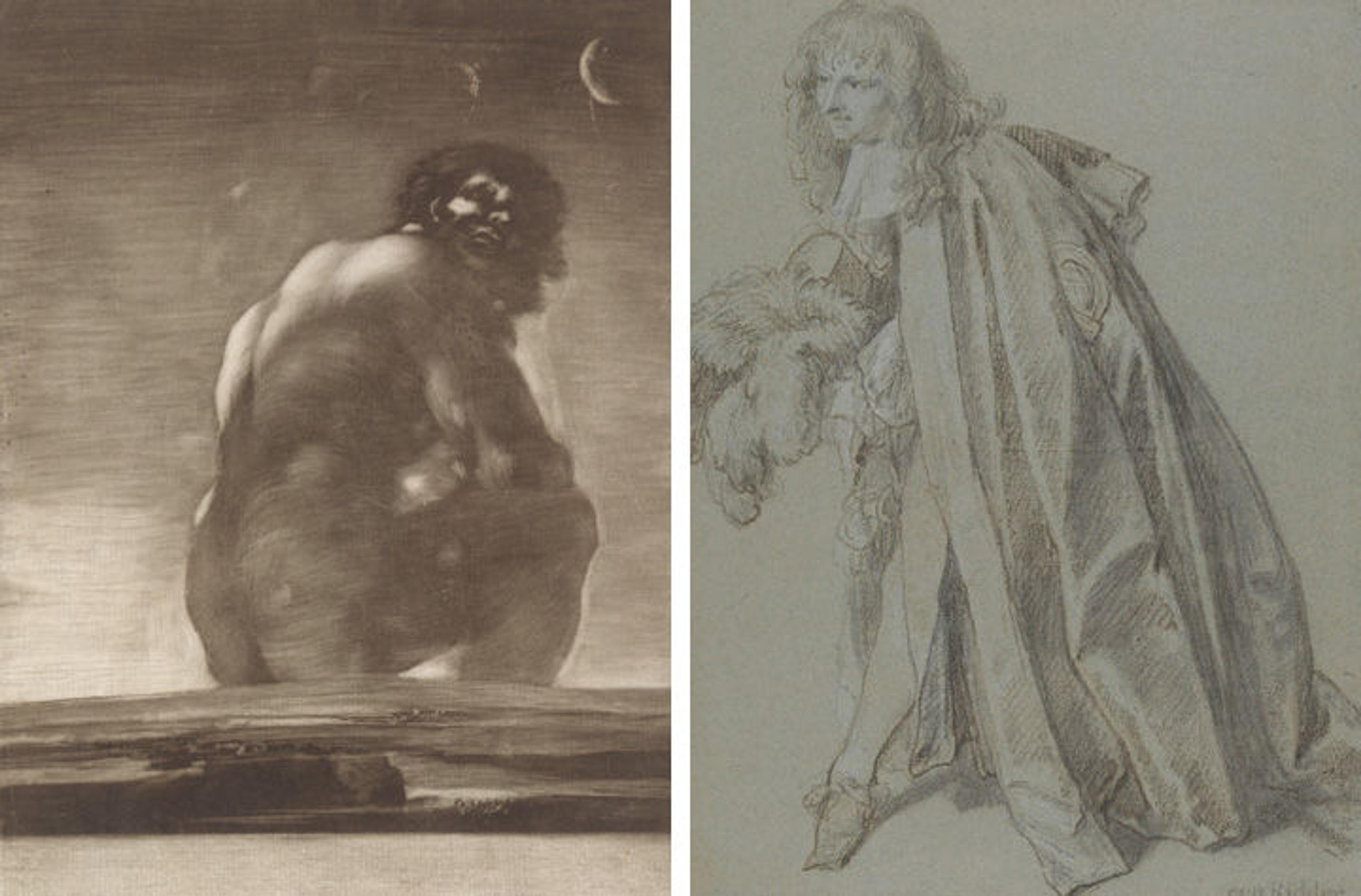
Left: Goya (Francisco de Goya y Lucientes) (Spanish, 1746–1828). A Giant Seated in a Landscape, sometimes called "The Colossus," by 1818. Burnished aquatint with scraping and strokes of 'lavis' added along the top of the landscape and within the landscape; Plate: 11 3/16 x 8 3/16 in. (28.4 x 20.8 cm). The Metropolitan Museum of Art, New York, Harris Brisbane Dick Fund, 1935 (35.42). Right: Sir Peter Lely (Pieter van der Faes) (British, 1618–1680). A Knight of the Order of the Garter, 1663–71. Black and white chalks, gray pastel, on blue-gray paper; Sheet: 17 3/8 x 13 1/8 in. (44.1 x 33.4 cm). The Metropolitan Museum of Art, New York, Purchase, Walter and Leonore Annenberg Acquisitions Endowment Fund and Charles and Jessie Price and PECO Foundation Gifts, 2014 (2014.43)
«To celebrate the centenary of a curatorial department dedicated to works on paper, The Robert Wood Johnson, Jr. Gallery will feature one highlight per week from the collection of the Department of Drawings and Prints through April 30, 2017. Reflecting the remarkable breadth of the department's holdings, the rotating selection will include drawings and prints, as well as woodblocks, books, cut paper, and ephemera ranging from the early 15th to the 21st century.»
Now on view through July 18 is one of Goya's most striking images: A Giant Seated in a Landscape (by 1818), sometimes called "The Colossus." Depicted is a giant seated in a landscape turning his head over his shoulder as if he has been disturbed from thought. While the implicit subject of this work is unclear, Goya produced this print using burnished aquatint to achieve subtle effects of light and dark, an apt technique for evoking a twilight atmosphere and conveying a sense of unease.
Sir Peter Lely's A Knight of the Order of the Garter (1663–71), a drawing from one of the most important series of Baroque drawings produced in 17th-century England, will be on view from July 19 through July 25. It represents a young knight bowing during the Garter's annual ceremonial procession, and was part of what was likely a decorative scheme for a tapestry.

Left: Antoine Watteau (French, 1684–1721). Head of a Man, ca. 1718. Red and black chalk; Sheet: 5 7/8 x 5 3/16 in. (14.9 x 13.1 cm). The Metropolitan Museum of Art, New York, Rogers Fund, 1937 (37.165.107). Right: Rembrandt (Rembrandt van Rijn) (Dutch, 1606–1669). Christ Crucified between the Two Thieves: The Three Crosses (detail), 1653. Drypoint printed on vellum; Plate: 15 x 17 1/4 in. (38.1 x 43.8 cm); Sheet: 15 1/8 x 17 7/16 in. (38.4 x 44.3 cm). The Metropolitan Museum of Art, New York, Gift of Felix M. Warburg and his family, 1941 (41.1.31)
Antoine Watteau's Head of a Man (ca. 1718), a red and black chalk drawing, will be installed for one week beginning on July 26. The expressive sheet is a study for the man's head in Watteau's painting Mezzetin (ca. 1718–20), also part of The Met collection. Mezzetin was a character in the popular commedia dell'arte typically regarded as amorous and sentimental. In this study, Watteau established the angle of the head, the uplifted eyes, and the parted lips that he later carried over to the painting.
From August 2 through August 8, you will have the chance to view Rembrandt's Christ Crucified between the Two Thieves: The Three Crosses (1653), one of the artist's finest works in any medium. To create the monumental print, Rembrandt drew on the copperplate entirely in drypoint, which allowed him to fully exploit the velvety areas of burr raised by the drypoint tool as it cut into the copperplate. By creatively inking the plate, Rembrandt painted each impression, so to speak, thus producing a unique work each time he printed the plate.

Left: Hans Baldung (called Hans Baldung Grien) (German, 1484/85–1545). The Witches' Sabbath, 1510. Chiaroscuro woodcut in two blocks, printed in gray and black; Sheet: 15 5/6 x 10 5/8 in. (38.9 x 27 cm). The Metropolitan Museum of Art, New York, Gift of Felix M. Warburg and his family, 1941 (41.1.201). Right: Hans Christian Andersen (Danish, 1805–1875). A Whole Cut Fairy Tale, ca. 1864. Paper cutout; Sheet: 13 9/16 x 13 1/4 in. (34.4 x 33.7 cm). The Metropolitan Museum of Art, New York, The Elisha Whittelsey Collection, The Elisha Whittelsey Fund and Mary Martin Fund, 2012 (2012.379)
Hans Baldung's The Witches' Sabbath (1510), a masterpiece of German chiaroscuro, will be on view from August 9 through August 15. Baldung was one of the earliest and most effective practitioners of the chiaroscuro woodcut—a woodcut technique intended to imitate the appearance of a type of drawing on colored paper.
From August 16 through August 22, a work by one of the world's most beloved storytellers, Hans Christian Andersen, will be on view. Andersen was an amateur paper cutter and often traveled with a pair of scissors, ready to entertain friends with his whimsical designs. To create A Whole Cut Fairy Tale (1864), Andersen folded a large sheet three times to create a fantastic scene filled with masks, Pierrots, ballet dancers, angels, swans, and palm trees.
Check back soon on Now at The Met to find out which highlights from the department's collection we will present in the late summer and fall!
Related Link
Drawings and Prints: Selections from The Met Collection, on view at The Met Fifth Avenue from July 19 through October 24, 2016
